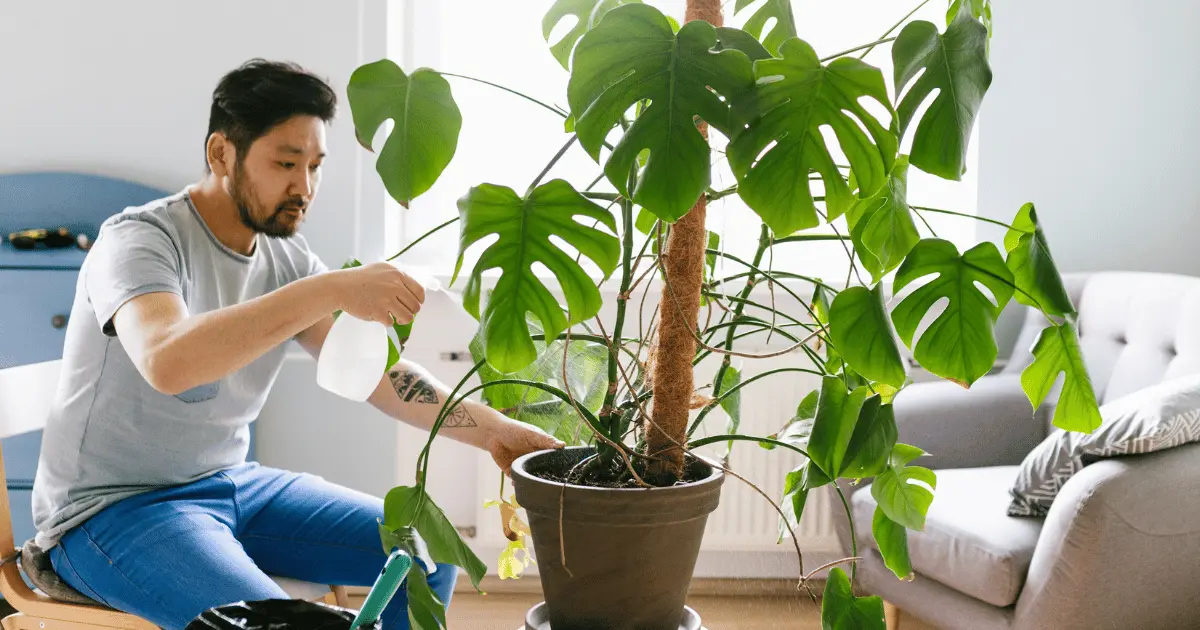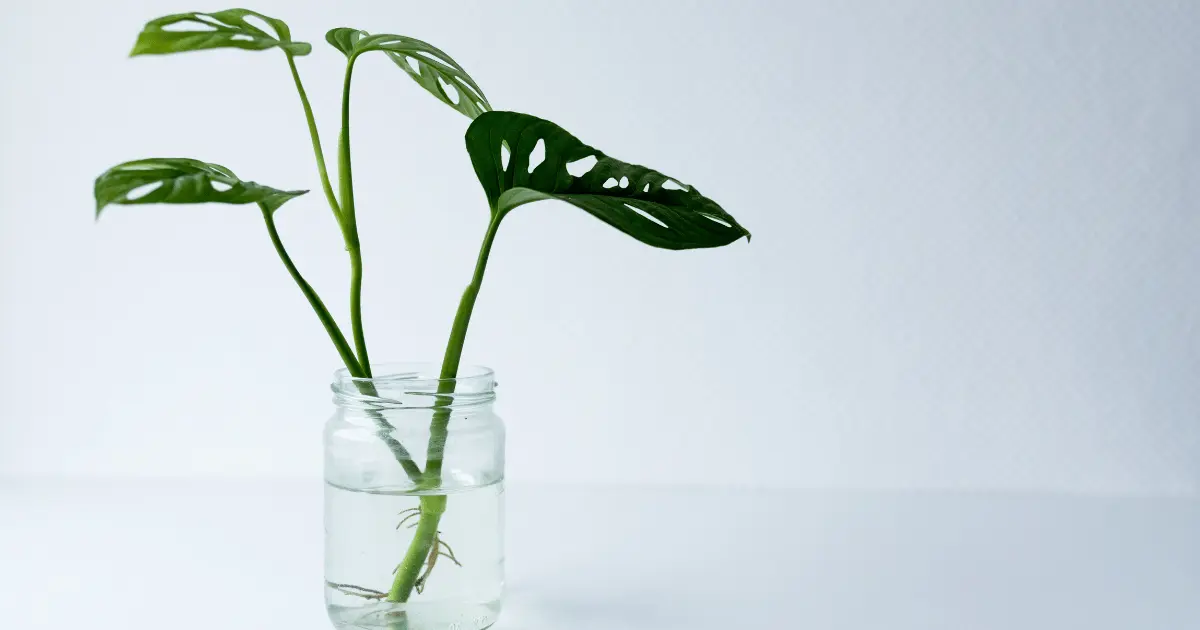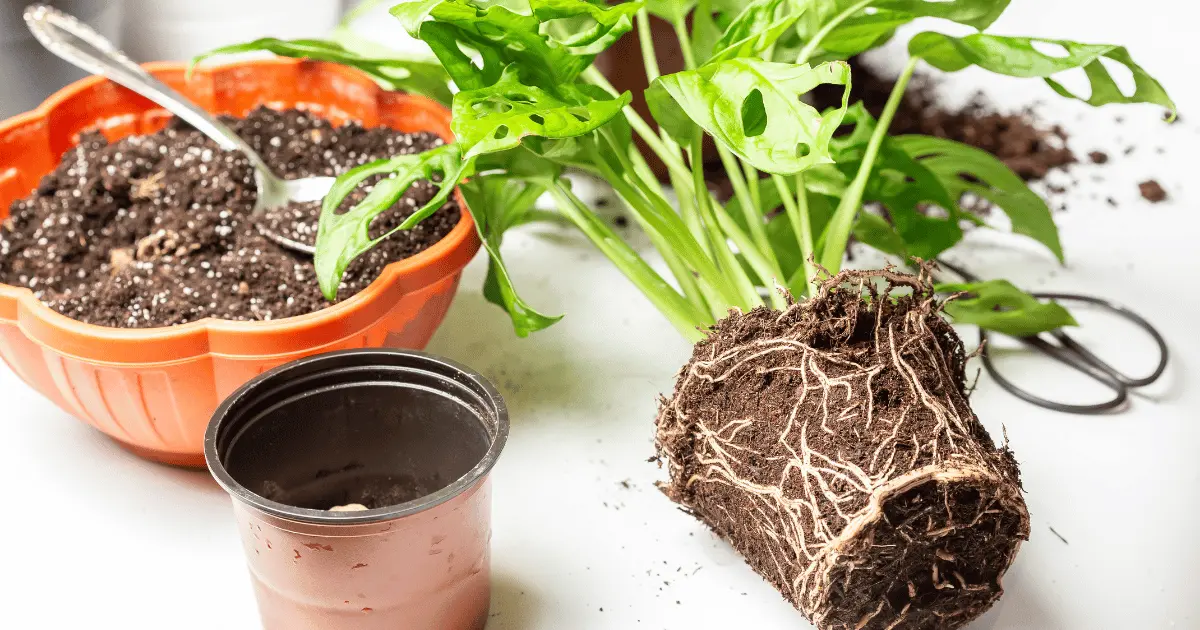One of the most sought-after tropical plants on the market is Monstera. They make the perfect houseplant because they don’t need a lot of areas and have magnificent leaves. As a household plant owner, one of the first things I had to learn was to take proper care of my plants to avoid them dying of disease, pest attacks, or my own mistakes.
Taking adequate care of my plants has been my watchword. I want to share my secrets with you, so you can care for your plants just as I did and watch them blossom while giving your home enough beauty.
Factors That Affect The Frequency Of Your Monstera Watering

A tropical setting is the Monstera plant’s optimal habitat. You can find these plants in the understory of tropical or jungle woods. They thus have a few unique requirements to maintain their health. The fact that they are tropical and not all of us live in luxuriant rainforests as I do makes it difficult to know how to water a Monstera. The factors that affect monstera watering frequency include:
- Humidity And Temperature
When watering a Monstera, temperature and humidity are important considerations. Usually, Monstera plants respond favorably to increased humidity levels and warmer temperatures. A Monstera transpires more when these two values are raised, necessitating more water than under other conditions.
Although average room humidity will do, humid circumstances are preferred. Use a fine-mist mister or humidifier to increase the humidity level in the room. Most houseplants prefer temperatures between 65°F and 85°F (18°C and 30°C). It’s best to keep the temperature above 60°F (15°C).
- Soil Type
Monstera plants require a soil mixture similar to their natural habitat. Soil cannot be compacted in any way, according to this. Fresh soil should frequently be combined with perlite and orchid bark, allowing any extra water to drain. The Monstera’s life cycle and water requirements depend significantly on the soil composition. Use a potting mix that drains effectively. As needed, include elements like perlite or lava rocks to improve soil aeration.
- Type Of Pot
Although Monstera plants develop huge leaves, they do not fare well in large pots. These plants thrive in smaller pots with good drainage holes. Because monstera roots are short and can’t penetrate much soil, they can’t find water in any part of the potting medium. At best, this causes damp soil; at worst, it causes wet soil. Both contribute to the decay of Monstera roots.
When they use a terracotta pot and practice excellent watering techniques, many Monstera owners enjoy success with their plants. A terracotta pot only has one drainage hole, but the pot itself keeps water from accumulating, keeping the soil damp but not soggy.
- Plant Growth Period
The three seasons that Monsteras grow the fastest are spring, summer, and fall. This also has to do with seasonality. You can experience problems with underwatering during these months as opposed to overwatering. Regulation of irrigation and optimum illumination with bright, indirect light are required to promote growth.
- Winter: One of the numerous tropical indoor plants dormant in the winter is the monstera plant. The fact that Monstera is a tropical plant plays a significant role in the causes of this dormancy. These plants flourish in tropical climates, and when the humidity and temperature change, they enter a dormant state to save energy.
It’s crucial to avoid overwatering your Monstera during the winter. The potting soil can get excessively damp since the plant won’t be able to absorb as much water. Long-term soil wetness can cause root rot, which will ultimately cause your Monstera’s demise. Water your Monstera only when the soil is dry or once every two to three weeks.
- Summer: Most of the time, Monstera plants are active in the summer. This is because the plant feels like it is in a more tropical environment due to the greater temperatures and humidity. Your Monstera will require more water in the summer than in winter. When the top 2 inches of the plant’s soil are dry, or once per week, supply distilled to Monstera plants.
How Much Water Do I Give My Monstera?

All of the elements mentioned above play a significant role in determining how much water your Monstera plants require. Monstera plants respond strongly to their surroundings and growing circumstances. Your plant will require more water if kept in a warmer location with ideal growing conditions. The most crucial thing you can do is observe your plant and keep an eye out for the typical indicators of over- and under-watering.
How Do I Water My Monstera?
Monsteras prefer moderate irrigation. Regarding indoor plants, moderate irrigation or watering refers to watering when the soil is damp one to two inches below the surface. I’ve discovered that placing Monstera in a sink or using a watering can to gradually add water until it begins to run out of the drainage holes works best for watering. Now, empty the drainage tray.
Avoid soaking the soil; as the extra water drains out, keep emptying the drainage tray.
Avoid getting the leaves damp. Instead of pouring water on top of the plant, apply it to the soil. Ensure your pot has adequate drainage and that the soil drains fast because Monsteras don’t like to be overwatered. You should move to better-draining soil if the soil is compacted or water doesn’t drain into the tray.
When watering your plants, use filtered water at room temperature, or leave the water out overnight to allow chemicals like chlorine to evaporate. Your Monstera should be slightly under-watered rather than over-watered.
How To Test Your Soil For Water

Here are simple ways to test your soil for water. These are the methods I use, so I’m confident in recommending them to you. They include:
- Finger poking
Push your finger gently into the ground until it is about two knuckles deep. You can postpone watering if the soil feels damp down. It could be time to give your Monstera a drink if it’s dry.
- Moisture Metre
Place a moisture meter into the soil midway between the plant’s base and the side of the pot and halfway down into the pot to use it. The land is drying out and ready for water when the meter reads around a 3.
When Does My Monstera Need More Water?
Due to plant growth and increased transpiration throughout the summer, extra watering is necessary. The best time to encourage your Monstera to flourish brilliantly is during the summer. Your Monstera will attempt to grow fresh, strong roots in the new soil after re-potting. When you re-pot your plant, more water will be needed.
When Does My Monstera Need Less Water?
Monsteras go into dormancy during the winter, requiring less water than other indoor plants. Maintaining a summer irrigation program in the winter can result in prolonged waterlogging of the soil and possibly root rot.
Watering your Monstera should be reduced when the potting mix is holding onto moisture for an extended period. It is something that may happen at any time of year. You might be overwatering if the top inches of soil is consistently damp for days, which can cause fungus infections and root rot. Always inspect the soil before rehydrating.
